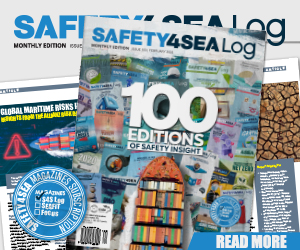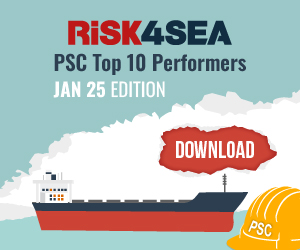The Swedish Club announced the launch of its ”Passage Plan+ Guide”, an essential resource designed to support shipowners, operators, and navigational officers which includes several suggestions to provide a more resilient Voyage/Passage Plan.
Voyage/Passage planning is something that must be carried out for every vessel before departure. Every company has its own procedures and there are many guides defining how it should be handled.
As an insurance company, we handle many claims every year and issues regarding Voyage/Passage planning are a recurring theme
…said Joakim Enström, Senior Loss Prevention Officer, The Swedish Club.
The below suggestions are what the Swedish Club believes should be included to make an even more resilient Voyage/Passage Plan, which they call it as Voyage/Passage Plan+:
#1 Port cards
Port cards include critical navigation information. There should be a general section which applies to all the company’s vessels which are port specific e.g. photos of the port and other points of interest. As they include experiences from all company vessels, this document should be continuously updated.
It is important to include how successful operations were achieved and the learning experiences from them. When debriefed they help to understand what went well and what did not and the reasons for this. There should also be a vessel specific section which defines proper propulsion capabilities, mooring arrangements, specific environmental limitations etc
#2 Voyage/Passage Planning in Confined Waters
The Voyage/Passage Plan is the foundation for the entire navigation control process from berth to berth. The Voyage/Passage Plan should facilitate timely
interventions by the bridge team members – this is one of the cornerstones of Maritime Crew Resource Management.
The Safety Margin is a resource to be used, when necessary, in case of unexpected/unplanned situations.
Effective communication is needed in case the pilot makes a deviation from the planned corridor. This must be done without criticising or creating a feeling of threat which could cause the pilot to react defensively. The vessel is still in the agreed corridor and has not used any of the safety margin.
#3 Voyage/Passage Plan sub sections
By dividing the Voyage/Passage Plan into four different sub-sections, it can emphasize in more detail the critical and final stages of the plan.
#4 Bridge Team setup
This is a suggestion on how the bridge team can be setup. One person can have several roles if only the Master and one Officer are present on the bridge. This means that the Master can be Conning and Command while the OOW is Monitoring and Assisting Navigator.
For this system to work, it is imperative
that correct information is received by all team members. It should always be clear who has the conn i.e. if the OOW has the conn, the Master must clearly inform the bridge team when he takes the conn. Just because the Master is on the bridge doesn’t mean he has the conn, however the Master always has command of the vessel as he/she is legally responsible for the safety of the vessel.
#5 Communication
Communication between the bridge team and the pilot is critical for safe operations. Reality and its meaning for one person can be completely different for another.
For communication to be effective it is essential that we ensure that our message has been well received and understood by the recipient. This enhances situational awareness, which defines our understanding of what is happening and what is likely to happen.
When the bridge officer is not fully aware of what is happening around the vessel and has not fully reflected on what the consequences of his action or inaction will be, then we see poor situational awareness.
Suggested tool
Thinking aloud – This is as it sounds, the intended action will be voiced. “I will alter to starboard to two-seven-five and reduce speed to ten knots.” After this has been voiced to all on the bridge the action is taken
#6 Due Diligence in Voyage/Passage planning
According to case law, for proper Voyage/Passage planning it is not enough to just comply with rules and regulations. Voyage/
Passage planning should also include due diligence.
Due diligence essentially means to think of all possible practical precautions that can be done and implemented. The plan should have defined margins and what is expected of the bridge team if these are used
• identify all possible, critical issues of concern with an argument on why for each of them (foreseeability)
• identify all possible practical precautions (technically doable)
• determine which possible practical precautions are reasonable, taking into account the availability and suitability of good practices/knowledge and their cost
• Implement the precautions
• Assure Quality
No system is perfect, but a prepared bridge team is better at detecting an issue before it is too late


































































